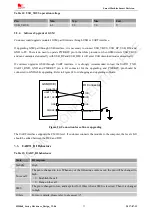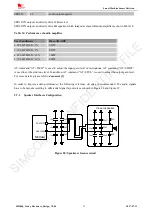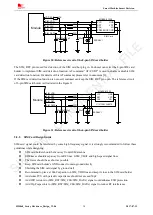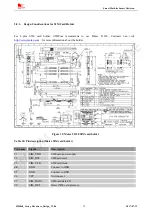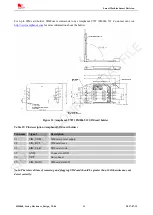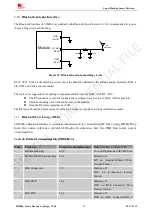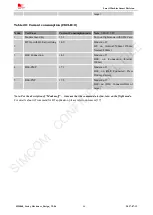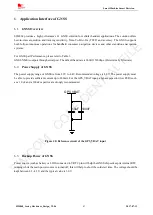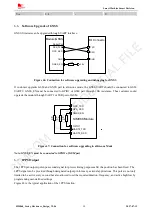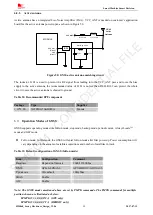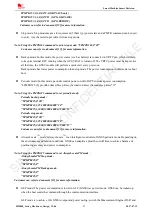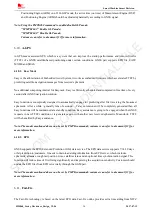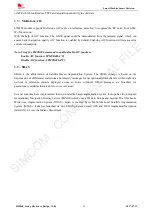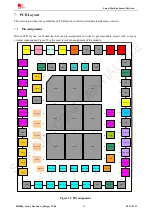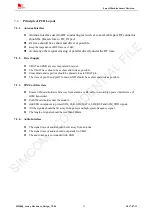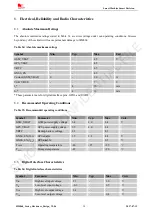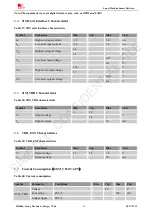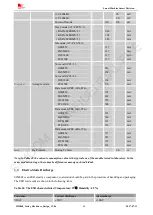
Smart Machine Smart Decision
SIM868_Series_Hardware_Design_V1.06
47
2017-07-13
6.
Application Interface of GNSS
6.1.
GNSS Overview
SIM868 provides a high-performance L1 GNSS solution for cellular handset applications. The solution offers
best-in-class acquisition and tracking sensitivity, Time-To-First-Fix (TTFF) and accuracy. The GNSS supports
both fully-autonomous operations for handheld consumer navigation devices and other standalone navigation
systems.
For GNSS part Performance, please refer to Table 3.
GNSS NMEA outputs through serial port. The default baud rate is 9600/115200bps. (Determine by firmware)
6.2.
Power Supply of GNSS
The power supply range of GNSS is from 2.9V to 4.4V. Recommended voltage is 4.0V. The power supply must
be able to provide sufficient current up to 200mA. For the GPS_VBAT input, a bypass capacitor (low ESR) such
as a 10 µF and a 100nF capacitor are strongly recommended.
GPS_VBAT
10uF 100nF
Figure 40: Reference circuit of the GPS_VBAT input
6.3.
Backup Power of GNSS
Power source (such as battery or LDO) connected to VRTC pin will help the GNSS chipset keep its internal RTC
running while the main power source is turned off, this will help to short the cold start time. The voltage should be
kept between 2.3~4.3V, and the typical value is 3.0V.
SIMCOM
CONFIDENTIAL
FILE

